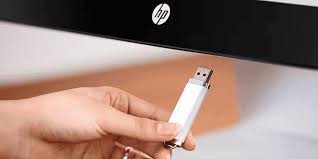The BIOS (Basic Input/Output System) is a crucial component of your computer that initializes hardware during the boot process and provides runtime services for operating systems and programs. Accessing the BIOS on Windows 10 is essential for troubleshooting, updating firmware, and customizing hardware settings. In this guide, we’ll walk you through various methods to open the BIOS on Windows 10, ensuring you can access and modify your system settings with ease.
Understanding BIOS and UEFI
The BIOS has been largely replaced by the Unified Extensible Firmware Interface (UEFI) on modern computers. UEFI offers several advantages over traditional BIOS, including improved security, faster boot times, and support for larger hard drives. However, the term “BIOS” is still commonly used to refer to both BIOS and UEFI.
How to Access BIOS/UEFI on Windows 10

Method 1: Using the Start Menu
- Open the Start Menu: Click on the Start button in the bottom-left corner of your screen.
- Select the Power Icon: Click on the power icon, then hold down the Shift key while clicking on “Restart.”
- Access Advanced Startup Options: Your computer will restart and bring up the Advanced Startup Options menu.
- Navigate to Troubleshoot: Select “Troubleshoot” from the menu.
- Choose Advanced Options: Click on “Advanced Options.”
- Select UEFI Firmware Settings: Click on “UEFI Firmware Settings” and then click “Restart.”
- Enter BIOS/UEFI: Your computer will restart and boot into the BIOS/UEFI settings.
Method 2: Using the Settings App
- Open Settings: Click on the Start button and select the gear icon to open the Settings app.
- Go to Update & Security: Click on “Update & Security.”
- Select Recovery: In the left sidebar, click on “Recovery.”
- Restart Now: Under the “Advanced startup” section, click on “Restart now.”
- Access Advanced Startup Options: Your computer will restart and bring up the Advanced Startup Options menu.
- Navigate to Troubleshoot: Select “Troubleshoot” from the menu.
- Choose Advanced Options: Click on “Advanced Options.”
- Select UEFI Firmware Settings: Click on “UEFI Firmware Settings” and then click “Restart.”
- Enter BIOS/UEFI: Your computer will restart and boot into the BIOS/UEFI settings.
Method 3: Using a Shortcut
- Create a Shortcut: Right-click on your desktop and select “New” > “Shortcut.”
- Enter Command: Type
shutdown /r /oand click “Next.” - Name the Shortcut: Give the shortcut a name, such as “Open BIOS.”
- Use the Shortcut: Double-click the shortcut to restart your computer and access the BIOS/UEFI settings.
Tips for Accessing BIOS/UEFI
- Check Manufacturer’s Instructions: Different manufacturers may use different keys to access the BIOS/UEFI. Refer to your computer’s manual or manufacturer’s website for specific instructions.
- Disable Fast Startup: Ensure that Fast Startup is disabled in Windows 10, as it can prevent you from accessing the BIOS/UEFI. Go to Control Panel > Power Options > Choose what the power buttons do > Change settings that are currently unavailable, and uncheck “Turn on fast startup.”
- Use the Correct Key: When restarting your computer, press the appropriate key (usually F2, F10, Del, or Esc) to enter the BIOS/UEFI settings. The key may be displayed briefly on the screen during startup.
Why Access BIOS/UEFI?
Accessing the BIOS/UEFI allows you to:
- Update Firmware: Install updates to your system’s firmware for improved performance and security.
- Change Boot Order: Set your computer to boot from a different device, such as a USB drive or DVD.
- Enable/Disable Features: Enable or disable hardware features like virtualization, secure boot, and RAID.
- Troubleshoot Issues: Diagnose and resolve hardware-related issues.
Conclusion
Opening the BIOS/UEFI on Windows 10 is a straightforward process once you know the steps. Whether you’re using the Start Menu, Settings app, or a shortcut, this guide provides simple and effective methods to access your BIOS/UEFI settings. By following these instructions, you’ll be able to customize and troubleshoot your system with confidence.